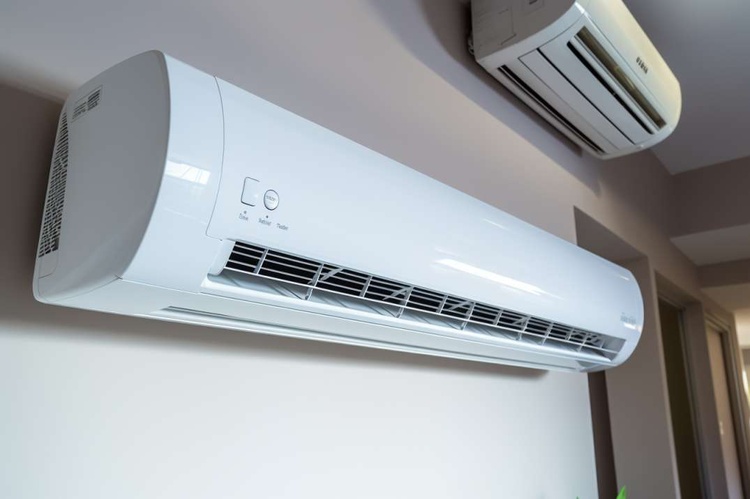Revolutionizing Home Comfort: The Ultimate Guide to Air Conditioning
Air conditioning has become an essential part of modern living, providing comfort and relief from sweltering temperatures. As technology advances, so do the options for keeping our homes cool and comfortable. This comprehensive guide will explore the world of air conditioning, focusing on innovative solutions like ductless air conditioning and mini-split systems that are transforming the way we think about home cooling.

Ductless systems offer several advantages over traditional air conditioning. They are more energy-efficient, as they don’t lose cooled air through ductwork. They also provide greater flexibility in terms of installation and zoning, allowing homeowners to cool specific areas of their homes independently.
How does a mini-split system work?
A mini-split system operates on the same basic principles as a traditional air conditioner but with some key differences. The outdoor unit houses the compressor and condenser, which compress and cool the refrigerant. This cooled refrigerant is then pumped through the small conduit to the indoor unit(s).
The indoor unit, or air handler, contains an evaporator coil and a fan. As warm air from the room passes over the evaporator coil, the refrigerant absorbs the heat, cooling the air. The fan then blows this cooled air back into the room. This process continues until the desired temperature is reached, as monitored by the system’s thermostat.
What are the benefits of ductless air conditioning for home cooling?
Ductless air conditioning systems offer numerous benefits for home cooling:
-
Energy Efficiency: Without the need for ductwork, these systems avoid the energy losses associated with central air conditioning, potentially reducing energy consumption by up to 30%.
-
Zoned Cooling: With multiple indoor units, you can create separate temperature zones in your home, cooling only the areas you’re using and saving energy in unoccupied spaces.
-
Improved Air Quality: Ductless systems include advanced filtration that can remove allergens, dust, and other pollutants from the air, improving indoor air quality.
-
Quiet Operation: The indoor units of mini-split systems operate at very low noise levels, providing a peaceful environment.
-
Easy Installation: Without the need for extensive ductwork, installation is typically quicker and less disruptive than traditional HVAC systems.
-
Versatility: Mini-split systems can be installed in various locations, including older homes without existing ductwork, additions, or spaces that are difficult to heat or cool.
How to choose the right indoor unit for your space?
Selecting the appropriate indoor unit is crucial for optimal performance of your ductless air conditioning system. Here are some factors to consider:
-
Room Size: The capacity of the indoor unit should match the size of the space it’s cooling. An undersized unit will struggle to cool effectively, while an oversized unit may cycle on and off too frequently, reducing efficiency.
-
Mounting Options: Indoor units come in various styles, including wall-mounted, ceiling-mounted, and floor-mounted options. Choose based on your room’s layout and aesthetic preferences.
-
Features: Look for units with features that suit your needs, such as programmable timers, remote control operation, or smart home integration.
-
Energy Efficiency Ratings: Pay attention to the SEER (Seasonal Energy Efficiency Ratio) rating. Higher SEER ratings indicate greater energy efficiency.
-
Noise Levels: If you’re installing a unit in a bedroom or quiet space, look for models with low decibel ratings.
What are the installation and maintenance requirements?
While ductless air conditioning systems are generally easier to install than traditional HVAC systems, professional installation is still recommended to ensure optimal performance and warranty coverage.
| Installation Step | Description | Estimated Time |
|---|---|---|
| Site Assessment | Determine optimal locations for indoor and outdoor units | 1-2 hours |
| Mounting Indoor Unit | Secure the indoor unit to the wall or ceiling | 1-2 hours per unit |
| Installing Outdoor Unit | Place and secure the outdoor compressor unit | 2-3 hours |
| Running Conduit | Connect indoor and outdoor units with refrigerant lines and wiring | 2-4 hours |
| System Testing | Ensure proper operation and perform any necessary adjustments | 1-2 hours |
Prices, rates, or cost estimates mentioned in this article are based on the latest available information but may change over time. Independent research is advised before making financial decisions.
Maintenance for ductless systems is relatively simple but essential for longevity and efficiency:
-
Clean or replace air filters monthly
-
Keep the outdoor unit free from debris
-
Schedule annual professional maintenance to check refrigerant levels and system performance
-
Clean the indoor unit’s coils and fan blades as needed
By following these guidelines, you can ensure that your ductless air conditioning system provides efficient and effective home cooling for years to come. Whether you’re looking to upgrade your existing cooling system or install air conditioning in a new space, ductless mini-split systems offer a versatile and energy-efficient solution for modern home comfort.






